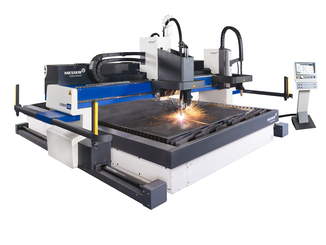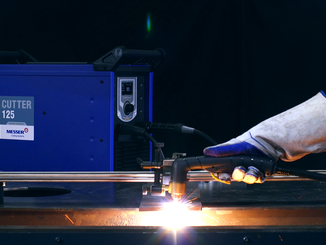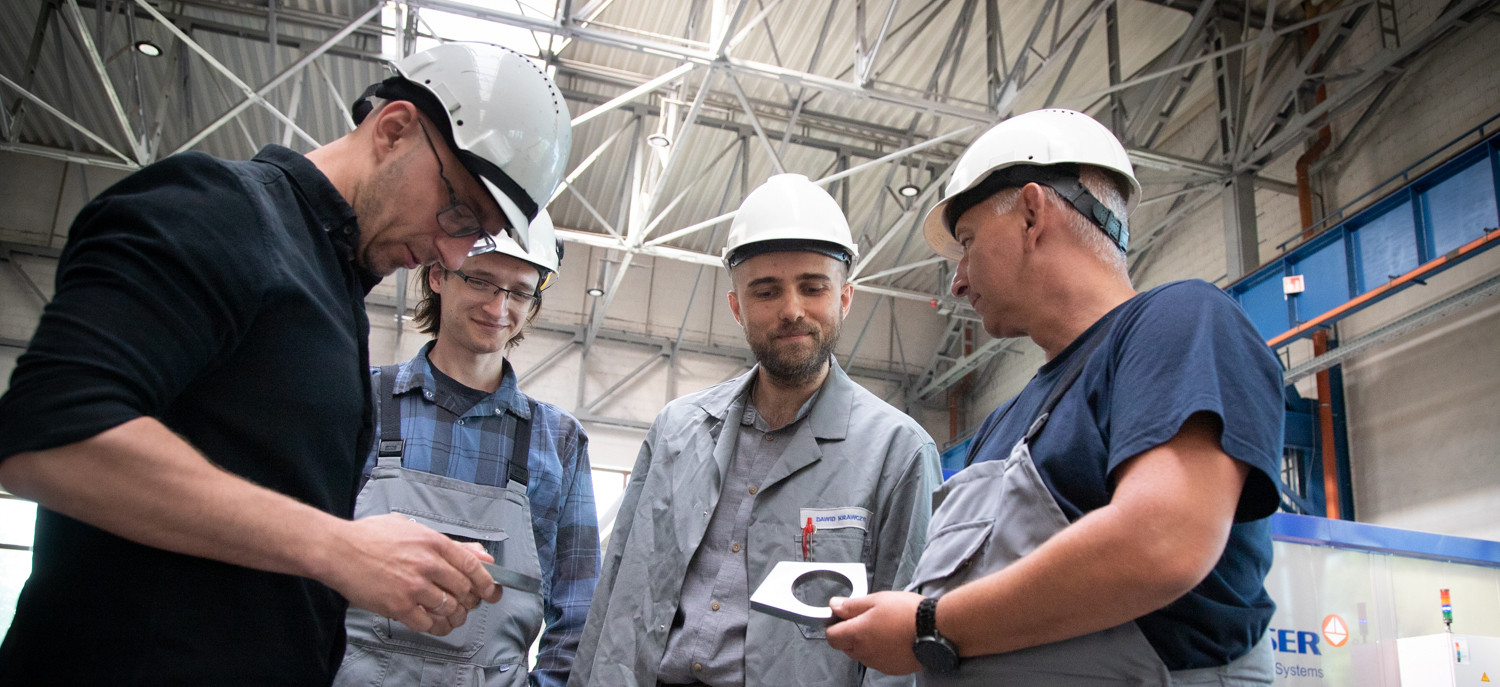
For several years now, the partnership between Joop van Zanten Staalservice and Messer Cutting Systems has been all about the “Smart Factory”. The introduction of a new automation system and the expansion of production capacities mark important steps on Joop’s path to digital transformation. The latest implementation of an OPC UA interface is a further milestone towards full automation and offers a wide range of benefits for the company. In an interview, Bart Kroesbergen, Managing Director at Joop, explains the importance of this interface for the Dutch steel processor.
In 2020, Joop and Messer Cutting Systems began their exciting journey towards Industry 4.0. Since then, a lot has changed at the Dutch steel processor: A completely new automation system, consisting of a fiber laser and a plasma cutting system with bevel technology and a drilling unit as well as a material handling system, now ensures the contract manufacturer’s extensive range of services. The central element is the OmniFab Software Suite, which connects the various Messer systems and equipment via interfaces and integrates them into the business processes in a process-oriented manner.
During the same period, Joop expanded its production technology with a 5-axis machining center and increased its bending capacities (up to 8 m bending length and 1,250 tons of pressure). The company also has a highly certified welding department with a welding robot (NEN 1090-3 / ISO 3834-2).
With the automation and digitalization of central production and business processes, Joop has reached an important milestone on the path to digital transformation. And the company remains “on course” to become a fully automated component supplier. Most recently, an OPC UA interface (Open Platform Communications Unified Architecture) was successfully implemented. Bart Kroesbergen, Managing Director at the steel service center in Veenendaal, the Netherlands, explains in an interview what is behind this and what advantages it brings for Joop.

© Messer Cutting Systems
Mr. Kroesbergen, thanks to the OmniFab integration, the company is already using Messer machine information in real time. The OPC UA interface implementation project has just been successfully completed. What was it all about?
Messer Cutting Systems has provided us with open and generic interfaces for the machines, which we can access freely and process the information in our own IT system. The integration with the Messer Cutting Systems machines went extremely smoothly: All machines were successively equipped with new, extended control software. Within a week, six machines were updated to provide machine information.
Why is this necessary?
We use a Scada system (Supervisory Control and Data Acquisition) to monitor and control all our production facilities and technologies across all sites and to collect and record data on their operation. Data transfer is much easier with the OPC UA standard. It is already deeply integrated, standardized and implemented in many industries. The machines can be easily connected to the overarching system via the OPC UA standard. This gives us a better overview of the entire production process. We can analyze the production data of all production steps in terms of schedule and costs and derive opportunities for improvement. In fact, we are gaining a kind of production “big data”.
How can we imagine this in concrete terms?
Production is already largely automated. We control them exclusively from a control room. This means we always have an up-to-date overview of which jobs need to be cut, what is currently happening in the machines, which jobs have been completed and can be cleared and how the production of the individual parts has developed. For example, Messer Cutting Systems provides us with the machine status cutting job and other information via OPC UA, which we then collate and analyze in our Scada system.
So what is the advantage of OPC UA for Joop van Zanten?
The interface enables secure, reliable and manufacturer-independent communication across different levels of our production. This is a decisive advantage for us, as it allows us to seamlessly integrate our systems from different manufacturers and production processes. This provides us with information about the costs, schedule and quality of an individual product. At the end of the production process, the data is combined to provide a complete insight into a product assembly that we supply to our customers as a component. We have now automated all our processes and data collection. Thanks to standardized data models, future systems can also be easily integrated into our existing network. In addition, high security standards ensure secure data exchange and protection against unauthorized access.
How was the collaboration?
Since our first joint automation project, Messer Cutting Systems and Joop have enjoyed a trusting partnership. The teams on both sides are always highly motivated to achieve success together. This was also the case this time with the interface integration project. We planned in advance exactly what information from our machinery would need to be available and customized it to our needs. For example, all tools should be supported. Messer Cutting Systems did an excellent job of adapting and implementing our requirements. All machines were then loaded with new software within a week – according to a very precise plan so that ongoing production was not disrupted.
Their aim is to fully automate production. What next steps are you planning?
Next we have to tackle the material transportation, which is not so easy due to the weight of some parts. We produce parts from 2 – 300 mm thick and sizes from 50 x 50 mm up to 14,000 x 3,000 mm on the knife machines. Due to this wide range of product weights and sizes, we still move a lot by hand. We have to improve the handling of the parts as much as possible. Together with Messer and other partners, we want to fully automate production.



